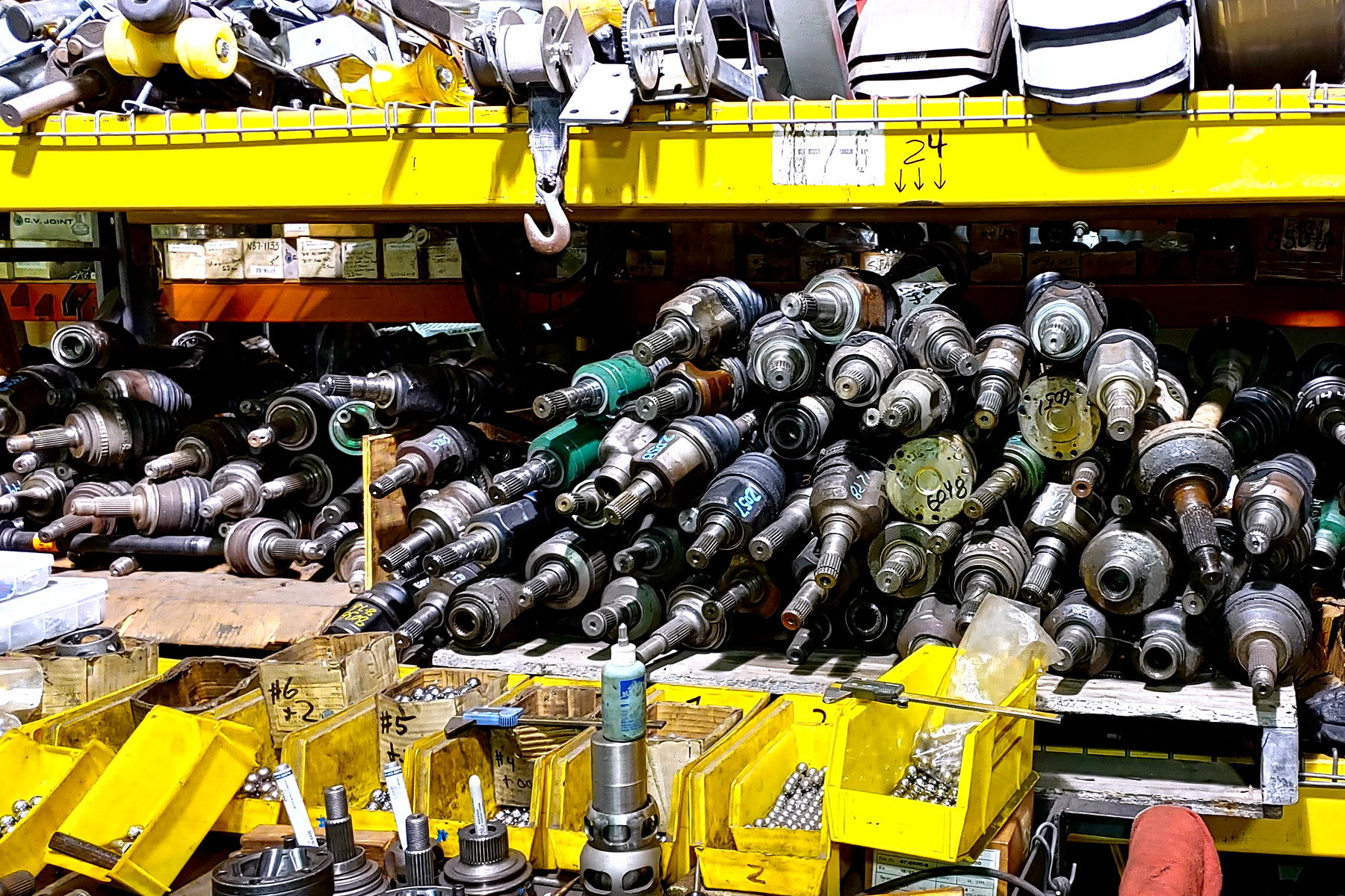

I’m not sure why they think it’s a toy, though…
The caliper side of things is a banjo bolt and StopTech includes the appropriate hardware to go with it. The car side of things is simply a threaded fitting that goes onto the hard brake line.
The lines are trivial to attach. Just be careful with the hard line — they don’t require a ton of torque and it can be easy to round off those little nuts on the hard line. You do not want to do that.
Man, this is exciting. It’s time to bleed the brakes! I grabbed my wife and got her a pumpin’ on the pedal, and I manned the caliper bleeders. Off we go!

I thought I heard funny sounds while my wife was pumping away. In my haste to get the brakes bled, I failed to consider the fact that I had not swapped all of the brake lines at all four corners. The OEM front calipers were still attached to their brake lines and to the brake system. So, as my wife pumped her little heart out, she pumped one of the pistons right out of the caliper and then was pumping all the brake fluid onto the floor!
Damnit strikes again. OK, no, that’s not true. It was my fault on this one 100%.
With the mess cleaned up, or at least mitigated, I got the rest of the lines on and we actually got to bleeding the brakes. Then it was time to wrap up small things here and there. Or probably go to bed. Or something.

Figs Engineering tells us:
The multi-link suspension is a somewhat complicated beast to tame. Change one link and it has an impact on the overall dynamics of the suspension. The important thing to focus on is dynamic vs static alignment behavior and how each adjustment will change the overall character of the vehicle handling.
The OE eccentric cams control the relative mounting position of the arms/links, but the arc of the link will stay the same. That means the for any static alignment (measured at a single ride height) the influence of each link will roughly be the same as the suspension travels. Shorter links will swing steeper as they climb into their arc compared to long arms/links that will change less given the same amount of travel. With adjustability of the link length, we can change the behavior of the dynamic alignment by allowing certain arc lengths to change.
Toe and camber are fighting a battle over the contact patch with this multi-link. The toe link is located on the front of the rear spindle and is the shortest link in the suspension. That means that it will influence geometry the most as it compresses, leading to bumpsteer (rear end steering based on compression). The rear LCA will balance against the toe link and also control camber, so you can see how this gets a little tricky to balance. The bottom line is that you need to fine tune the link lengths to match your goal. Using the factory eccentrics can help you maximize the linkage length and get the best behavior possible.
In the end there is no golden setup as it will all be influenced by your driving style, wheel setup and the overall travel of your suspension. But it is important to know the general behavior of the multi-link in order to understand how it can benefit your setup if you are feeling your vehicle behave a certain way. We typically start with a mild toe curve on all vehicles simply because they are lowered and already tilting the toe link. When mastered, bumpsteer can actually help the vehicle rotate in a 4-wheel steering behavior, which will create confidence in cornering and power application.
If you are going for a grip-type setup, you want to rotate the eccentric bolt all of the way outboard to lengthen the LCA. This maximizes the length of the LCA which maximizes negative camber. Turn the toe link eccentric full inward. This creates the longest toe link length possible with the shortest lower control arm length. This will allow the toe link to influence the least and provide more stable conditions over bumps. With the gross adjustment set via the eccentric, the LCA is then adjusted via the big nuts to achieve the desired static camber.
Excessive rear bump steer is quite exciting. Exciting in that butt-puckering “oh god I’m going to die” kind of way. You probably don’t want that. Make sure your alignment shop understands this. If you are getting your race car aligned at Costco, you deserve excitement.




10 comments
I would add one thing about bumpsteer. I learned a lot about bumpsteer on a wet AutoX track (the hard way), that I had no idea was happening in the dry. (The bumpsteer came from swapping Upper Control Arms on a EG6 Civic from Driver/Passenger sides in an effort to increase Caster, which is a horrible idea, and totally creates massive bumpsteer.)
If you can drive under wet conditions in a wide open parking lot with cones (ideally, not during an AutoX), I would highly recommend that you do it. Because, dry tracks can mask a lot of ‘issues’ that only reveal themselves under non-ideal, slippery driving conditions. Anyway, it’s better to learn about the effects your suspension/handling adjustments in a controlled environment, rather than during a race.
Don’t be like me, and don’t learn the hard way. Just sayin’.
Overboard is the only way to properly do things. Approve.
Yes, they are good lug nuts but they are milled not forged, not a big difference in 304 stainless though. Even at 10$ the margins are pretty small, cost of production is something like 4.50 so once you get through tax and shipping the profits are like 1.25$ for the producer and 2.50$ for the dealer. Really good lug nuts though, and way more concentric than forged and capped standard lug nuts, puts less stress on the rim.
Stainless lugs nuts? Strange concept to me considering stainless is known for how easily it galls. Certainly not something I would think to put on a race car where the wheels and tires will be on and off frequently. Also, because race car wheels and tires are on and off so frequently corrosion is really a non-issue. I’ve always just gone for cheaper open ended hardened steel racing lugs.
The MSI lug nuts have been in service on my Subaru BRZ since 2015. I have been using with Dorman wheel studs and have yet to run into any issues with them or my wheel studs. My BRZ has seen about 300 ish wheel changes in those 4 years due to it is an autocross car and I swap wheels at or before events and after.
With that said i use a Beta Tools hardened impact socket and a Milwaukee Tool impact for every change. These lug nuts take a beating and look no worse for their time in service.
I used to buy muteki SR48 lug nuts but I also had to replace the every year due to galling and they couldn’t handle the impact socket. This is part of reason why why the MSI lug nuts are hands down the best bang for the buck motorsports lug nut on the market.
Stainless only galls on stainless, even then, only some grades of stainless. Stainless lug nuts on Steel studs with aluminium rims wont gall.
So this answers my question on control arm bushings in your last article.
“forged” lug nuts are useless because they still have to cut the threads. A product that’s obviously not thought through and offer no advantage for more money!
@Simon how does cutting the threads invalidate the forging?
Simon, you cannot roll threads in the ID of something so cutting is acceptable. You may not have compressed stress and grain refinement in the thread roots but you will still have good grain structure in the nut body so its not “useless”.